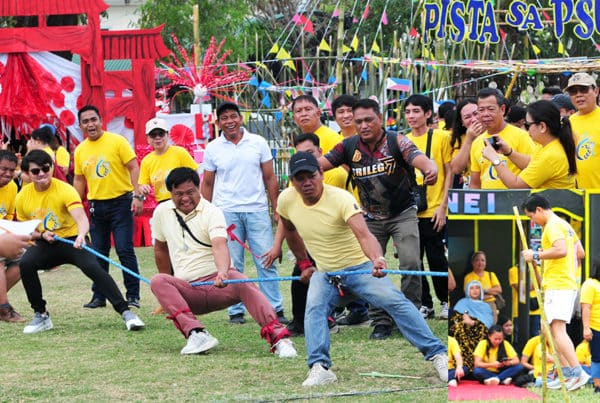3rd Anakbanwa Creative Residency launched in Dagupan
THE third Anakbanwa Creative Residency Program, with Pandaragupan Arts Show as its main component, was launched on December 2 at the MacArthur House of West Central Elementary School and is open from 1:00 p.m. to 6:00 p.m. till January 2024.
Organized by Rep. Christopher de Venecia to further boost the country’s creative industry, the activity features the works of resident artists, namely Lala Monserrat, Russ Ligtas, Eduard Gabrielle, Alanis Avanilla and Dale Magsino, in collaboration with other local artists.
The art pieces are for sale and entrance fee is by “pay what you can” arrangement.
At the launching program, attended by the Indonesian Ambassador to the Philippines Agus Widjojo and his wife, National Historical Commission Director Emmanuel Calairo and Cesar Gilbert Adriano of the National Library, De Venecia said the Anakbanwa program is part of the program to promote culture and the arts in the countryside.
“We have to decolonize, decentralize creativity away from Metro Manila and bring this to the regions and provinces, said De Venecia who acknowledged that the creative industry earned some 33 billion pesos for the national economy so far, making it as one of the country’s biggest economic driver today, second highest only to tourism and hospitality’
De Venecia is the principal author of the Republic Act No. 11904 – an Act Providing for the Development and Promotion of the Philippine Creative Industries.
He added that the book “Story of Dagupan” authored by the late historian Restituto Basa, Anakbanwa is the Pangasinan term for “Son of the Sun,” at the same time a title given to Pangasinense of prominence and consequence who influenced the historical, cultural, social and political life of the people of the province.
Identified as the first Anakbanwa of Dagupan during the early 1700 were Pablo Villamil and Pablo de Venecia, and his father, former Speaker Jose de Venecia Jr. is actually the fifth generation Anakbanwa.
“We did not realize that there is a historical link between our family and Anakbanwa,” he said
On the word Pandaragupan, De Venecia said the etymology of the word suggested it was the early name of Dagupan. It was during the Malong revolt that the name Pandaragupan was coined (connoting a gathering of a large number of people at one time in a town once called Bagnotan), was adopted and was shortened to Dagupan in 1770.
Referring to political differences played out at the city council, he said “much can be accomplished in Dagupan if the people set aside their differences and come together for a common good.” (Leonardo Micua)







